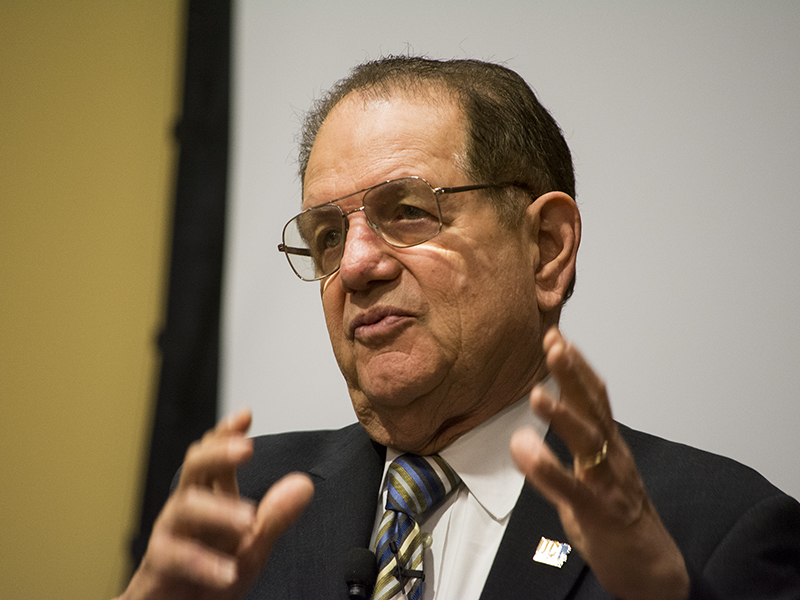
Former UCR chancellor and renowned physicist Raymond L. Orbach returned to UCR on Friday, April 25, to give a lecture on “Science and Diplomacy” to students and the general public at UCR’s genomics auditorium.
Having worked for the Department of Energy under former U.S. President George W. Bush, Orbach played a pivotal role in founding the international nuclear fusion research and engineering project, ITER (International Thermonuclear Experimental Reactor), which is currently constructing the world’s biggest tokamak nuclear fusion reactor.
Discussions about founding ITER began in 1986 after Iceland’s Reykjavik Summit between then-President Ronald Reagan and Soviet President Mikhail Gorbachev in which the two discussed nuclear disarmament. After failing to come to an agreement, they decided upon the concept of developing fusion energy between the United States, China, Japan, India, South Korea, the European Union (EU) and Russia, who proceeded to organize the ITER organization in 2006 — beginning construction of the site in Cadarache, France in 2010.
Despite the seven nations at the negotiating table, there were stumbling blocks from the beginning, according to Orbach. There were disputes on where ITER would be built. From the U.S. point of view there were four potential sites: the Darlington Site on Lake Ontario in Canada, the Spanish site near Barcelona, the Rokkusha-mura in northern Honshu, Japan, and the French site in Cadarache — the latter ultimately being chosen.
In 2001, the U.S. House of Representatives passed the “Securing America’s Future Energy Act,” which required the Department of Energy to take a number of actions exploring a “burning plasma” experiment that could generate fusion energy. In 2002, the National Research Council of the National Academy of Sciences endorsed the ITER effort as a necessary next step in the U.S. fusion energy research program. There was also a breakthrough in 2005, when the Energy Policy Act explicitly authorized U.S. participation in ITER.
Remaining challenges, according to Orbach, deal with costs and poor project management that has led to the U.S. contributing 9.1 percent (or about $3.9 billion) in funding.
“The reason I went over all this,” said Orbach, “is because this is not the last truly internationally scientific project. What we did is work through all those issues to reach some kind of agreement among very different legal systems.”
Orbach says, in the future, the building of a large-scale facility will exemplify years of long-term international agreements.
Rachel Tennell, a fourth-year public policy student, asked Orbach if the energy would be distributed around the world evenly or only benefit the seven nations that contributed.
“Those seven are involved because they are the ones who are going to benefit,” he said. “However, they have a pretty sizeable fraction of the world’s population. It will give them an edge over everybody else. What they do with it is a political issue.”
With the project costing around $4 billion, water science and policy doctoral candidate Edgar Humberto Tellez-Foster asked if the project was a matter of much-needed additional funding or the need to develop advanced fusion to accelerate the overall project.
“You’ll be alive, I won’t,” said Orbach, sparking laughs around the room. “The answer in my view is you don’t want to throw money at it unless you are sure that the money will be well-spent. At some point we have to take the chance that this is it.”








